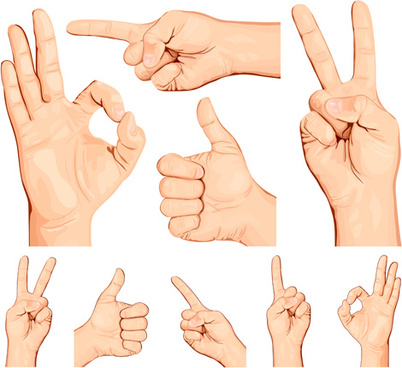NON-VERBAL COMMUNICATION
 When we talk about ‘communication’, we often mean ‘what we say’: the words that we use. However, interpersonal communication is much more than the explicit meaning of words, and the information or message that they convey. It also includes implicit messages, whether intentional or not, which are expressed through non-verbal behaviors.
When we talk about ‘communication’, we often mean ‘what we say’: the words that we use. However, interpersonal communication is much more than the explicit meaning of words, and the information or message that they convey. It also includes implicit messages, whether intentional or not, which are expressed through non-verbal behaviors.
These non-verbal signals can give clues and additional information and meaning over and above spoken (verbal) communication. Indeed, some estimates suggest that around 70 to 80% of communication is non-verbal communication.
Main factors of Non verbal Communication
1. Body language Body language refers to the nonverbal signals that we use to communicate. According to experts, these nonverbal signals make up a huge part of daily communication. From our facial expressions to our body movements, the things we don't say can still convey volumes of information.
It has been suggested that body language may account for between 50 percent to 70 percent of all communication. Understanding body language is important, but it is also essential to pay attention to other cues such as context. In many cases, you should look at signals as a group rather than focusing on a single action.It basically depends on facial expression and gestures.

It has been suggested that body language may account for between 50 percent to 70 percent of all communication. Understanding body language is important, but it is also essential to pay attention to other cues such as context. In many cases, you should look at signals as a group rather than focusing on a single action.It basically depends on facial expression and gestures.
*Facial Expressions:
Facial expressions are responsible for a huge proportion of nonverbal communication. Consider how much information can be conveyed with a smile or a frown. The look on a person's face is often the first thing we see, even before we hear what they have to say.While nonverbal communication and behavior can vary dramatically between cultures, the facial expressions for happiness, sadness, anger, and fear are similar throughout 
Facial expressions are responsible for a huge proportion of nonverbal communication. Consider how much information can be conveyed with a smile or a frown. The look on a person's face is often the first thing we see, even before we hear what they have to say.While nonverbal communication and behavior can vary dramatically between cultures, the facial expressions for happiness, sadness, anger, and fear are similar throughout 

*. Gestures:
Deliberate movements and signals are an important way to communicate meaning without words. Common gestures include waving, pointing, and using fingers to indicate numeric amounts. Other gestures are arbitrary and related to culture.
Deliberate movements and signals are an important way to communicate meaning without words. Common gestures include waving, pointing, and using fingers to indicate numeric amounts. Other gestures are arbitrary and related to culture.



10 comments:
Nice
Good work 👍
Great!
Yeah....nonverbal communication alse represents ur personality strong points and weak pointss.....Informative post againnn ...
Great info👍👍⭐
Great effort 💞💞
9c😊
Nice work.
Good job💕
Great effort 😍❤
Post a Comment